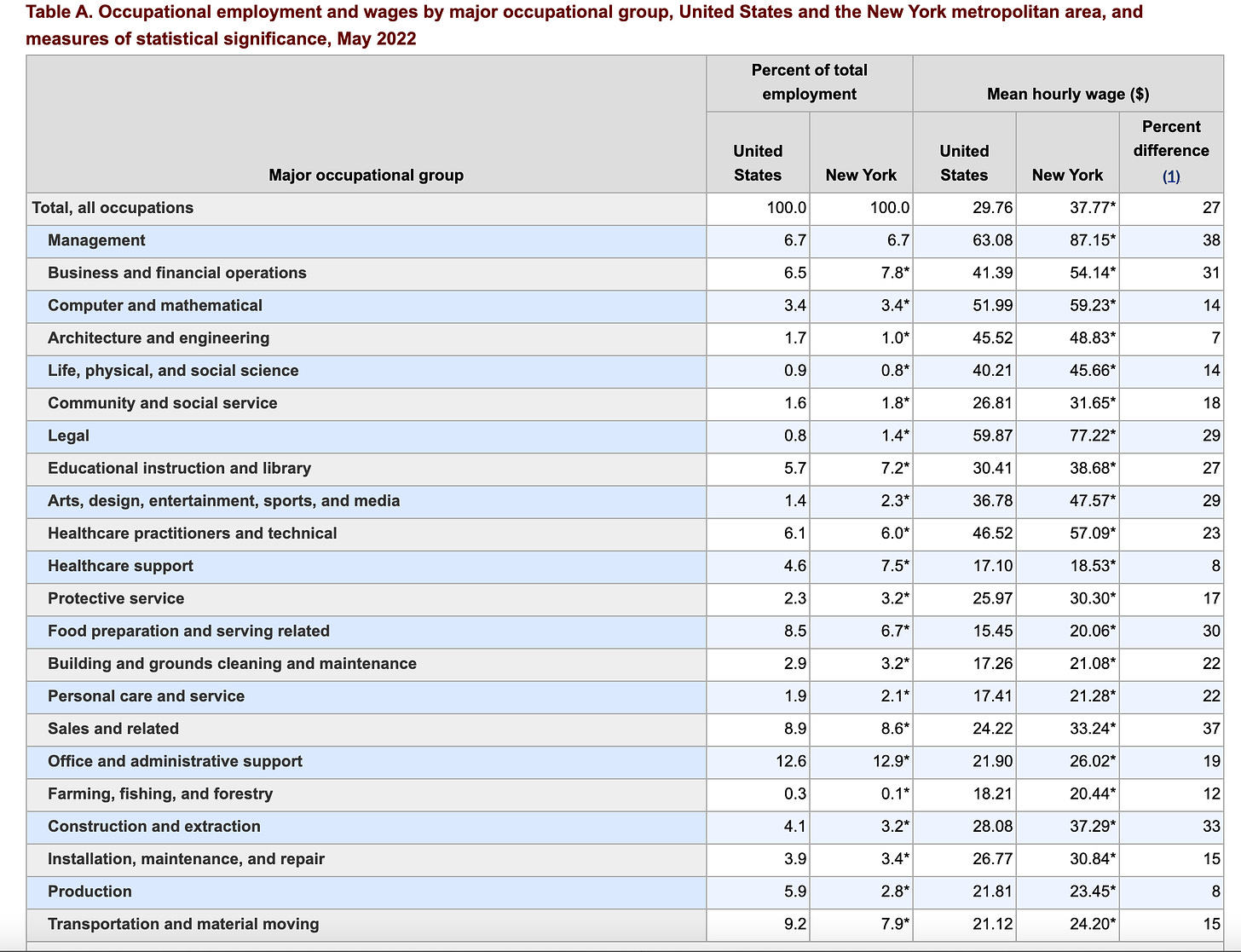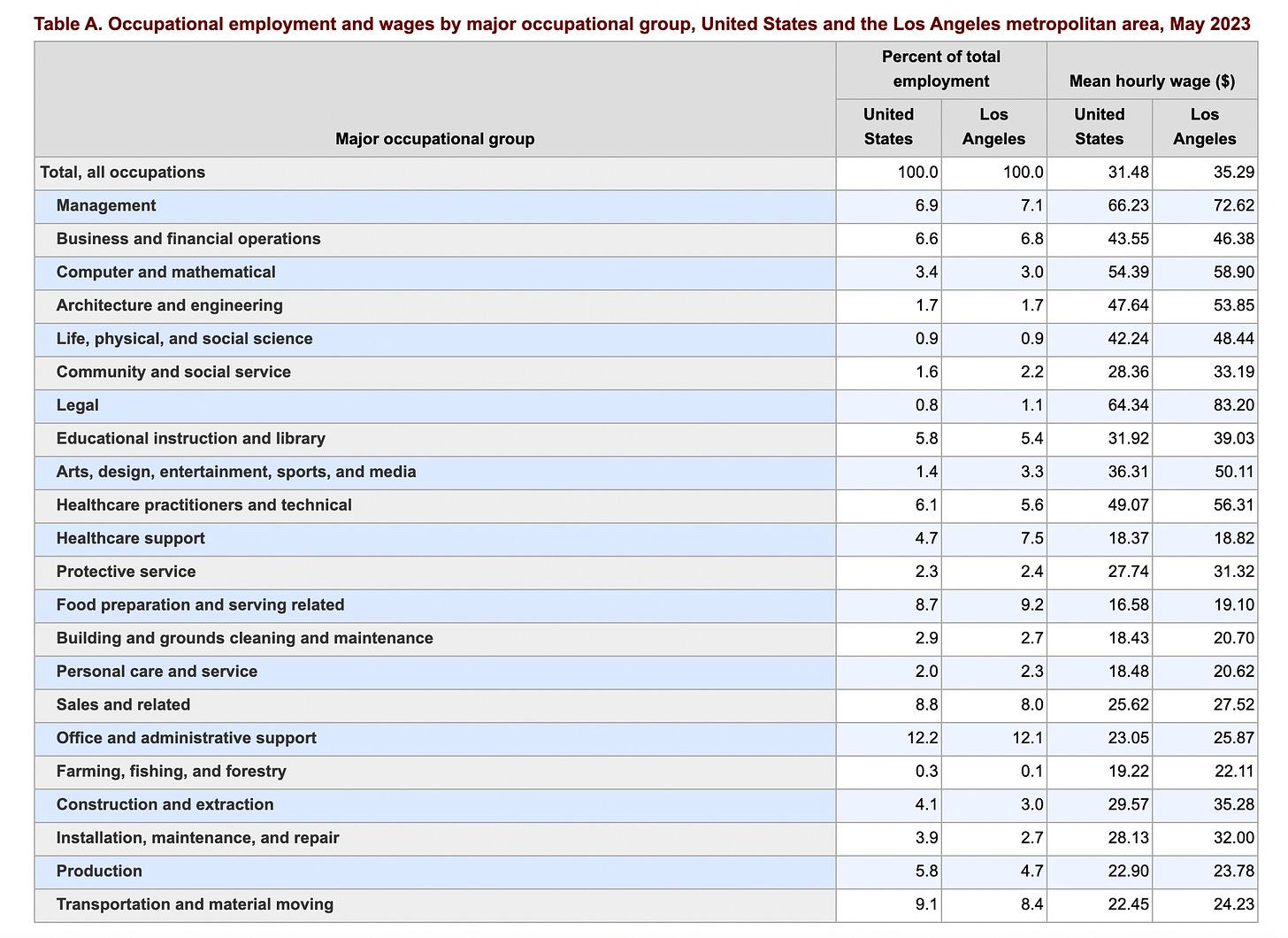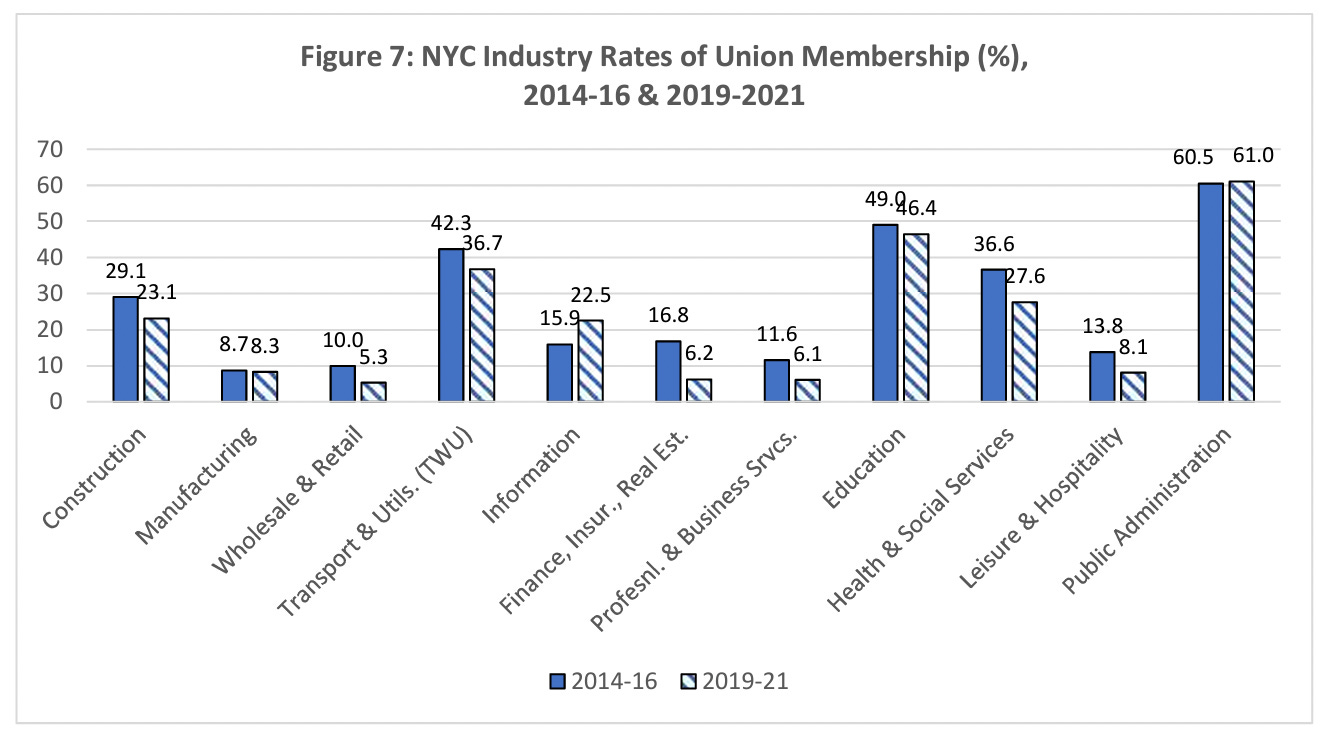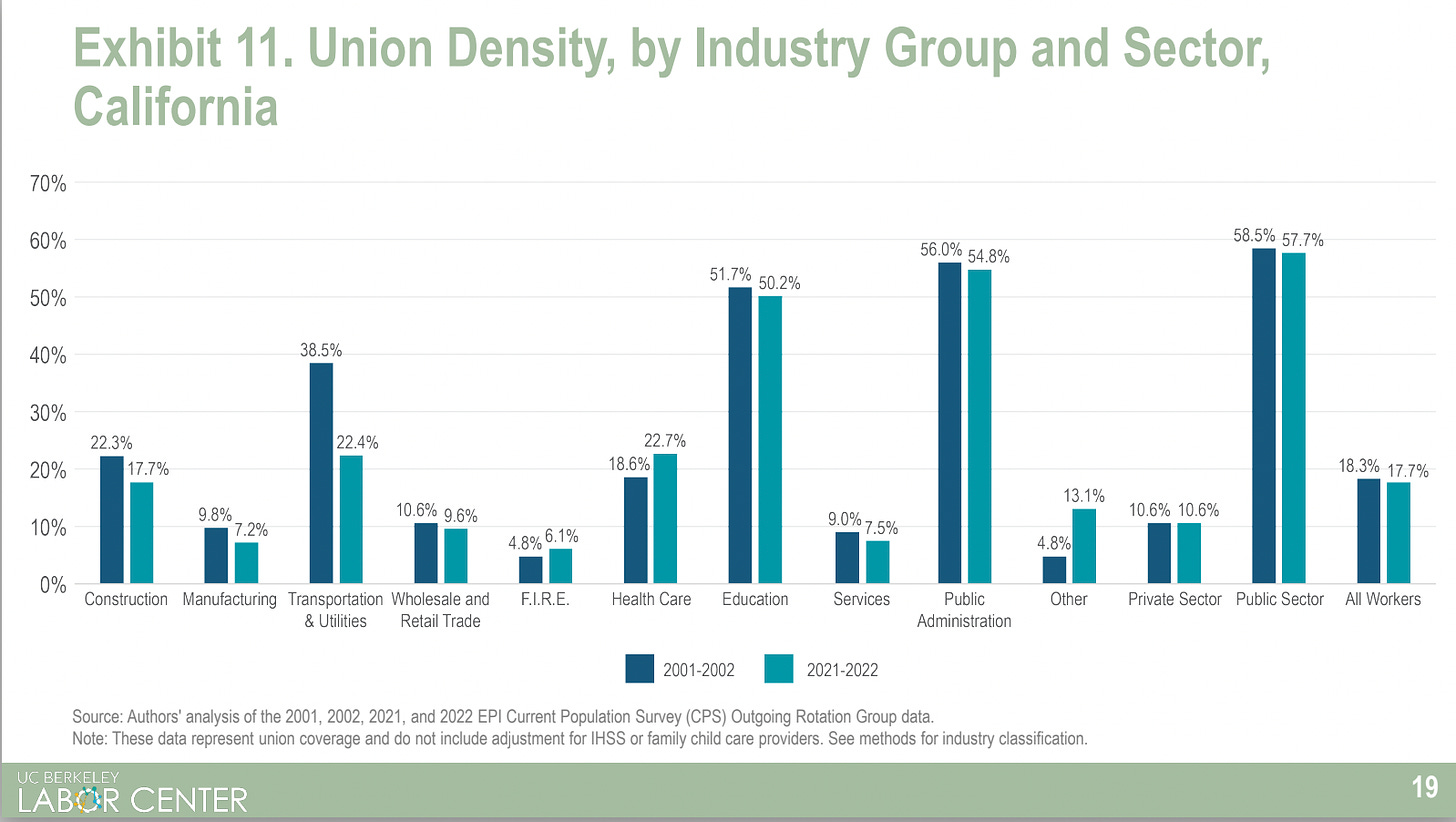Painting the Targets
The City of Los Angeles is focusing its Freelance Worker Protections Ordinance on industries the freelance-busting crowd favors.
A couple weeks ago, I came across this article written by attorneys with the Littler firm, which is a big one specializing in labor and employment law.
The article noted that in August, the City of Los Angeles unveiled its “model contract” for companies and independent contractors to use under the Freelance Worker Protections Ordinance.
Now, I’ve written before about these so-called “freelancer protection” ordinances, which sometimes go by the name Freelance Isn’t Free. If you are new to the freelance-busting issue, these laws probably sound benign to you. In reality, they’re an invention of the same freelance-busting brigade that’s trying to turn as many independent contractors as possible into unionizable employees.
For that reason, I noted these two lines in the article by Littler’s attorneys:
“Before using the model contract provided under the [Freelance Worker Protections Ordinance], entities engaging freelance workers must first ensure compliance with California Labor Code Section 2775 et seq., which governs the classification of workers as independent contractors. Compliance with California’s state statutes takes precedence, as misclassification can result in significant legal and financial consequences.”
This is important, because the reclassification of independent contractors as unionizable employees isn’t supposed to have anything to do with these types of “freelance protection” ordinances. The whole point, the “freelance protectors” claim, is simply to make sure that independent contractors get paid in a timely manner.
Here is the purpose of the Los Angeles ordinance, as stated in the ordinance itself:
“Freelance workers face challenges with payment for their services, including delayed payment, less than full payment, and non-payment. The City has an interest in ensuring that freelance workers are treated fairly and receive the compensation they are due.”
And yet, here we are again, with the idea of reclassifying independent contractors being a notable consideration.
With that in mind, I decided to look a little closer at the forms on the city’s website, including the form that independent contractors can use to file a complaint against a company as part of this ordinance. I wondered what kind of information the city was actually trying to collect from freelancers.
Lo and behold, the freelance-busting brigade’s influence is right there in black-and-white.
There are clues here about which industries they seem to favor most in their efforts to try and unionize as many of us as they can—even though most of us don’t want unionizable jobs at all.
Industry Categories
The city’s complaint form includes a section where independent contractors can check a box to tell Los Angeles authorities which industry is involved in the alleged failure to pay. Here’s how that section of the complaint form looks:
It seemed odd to me, how few industries are included—especially in a huge metropolitan region like Los Angeles, which has lots of industries.
And why is Journalism/Publishing listed separately from Other Media?
Why is Journalism specified at all?
Why is Architecture/Design on the list instead of, say, Janitorial Services and Home Healthcare, which the freelance-busting brigade routinely cite as being among most-affected industries for misclassification?
To try and answer these questions, I reached out to the city’s Office of Wage Standards. I asked how the categories were selected for the form.
The spokesperson from Los Angeles replied:
“Our office used the same industry categories that the City of New York used on their Freelance Worker Complaint form since theirs has been around the longest. We modeled most of our [Freelance Worker Protections Ordinance] processes after the NYC program.”
That seemed like a reasonable response—until I clicked over to the City of New York’s complaint portal.
It does not list any industries at all.
When independent contractors file a complaint in New York City, there’s only a blank space on the first page for people to fill in their occupation, and a blank space on the third page for people to fill in the name of the company the complaint is about.
So, I went back to the City of Los Angeles, noting this discrepancy. The spokesperson sent me a PDF of a New York City complaint form that does, indeed, have all the same industries in the same order with checkboxes—minus the bit about app-based transportation and delivery drivers, which Los Angeles seems to have added.
I next reached out to the City of New York to ask how its office chose the industries for the complaint form, what with it now being a model for other cities.
New York City’s spokesman told me:
“Unfortunately our institutional memory doesn’t go back far enough to address the question of why those industries were chosen. No one who works on the team currently was around back then.”
The form, this spokesman added, is no longer used in New York City. It “was retired some time ago and replaced with our complaint portal.”
Which, again, doesn’t list any industries at all. And which, for some reason, the City of Los Angeles did not use as its template for how to implement its freelancer ordinance, even though it’s the most up-to-date version available.
Digging Deeper
Now, I was really curious about how this targeting of certain industries got its start, and whether the categories even had anything to do with top industries in New York City and Los Angeles.
New York City’s Freelance Isn’t Free Act took effect in 2017. It was heralded as the first law of its kind in the country. This novel concept was championed by the Freelancers Union, which has found common ground with the Teamsters union, AFL-CIO and National Writers Union in attempting to enact more of these laws, and to support legislation that would reclassify many legitimate independent contractors as unionizable employees.
In New York, within a few years of this groundbreaking Freelance Isn’t Free Act taking effect, these were the significant industries in the city:
Construction, particularly heavy- and civil-engineering construction, which includes replacing aging infrastructure such as roads, tunnels and bridges;
Trade, Transportation and utilities, particularly couriers and messengers, and warehousing and storage;
Information, particularly internet publishing, web broadcasting and search portal companies;
Financial activities, particularly securities, commodity contracts and other financial investments;
Professional and business services, particularly professional, scientific and technical services (everything from management consulting to accounting), and administrative and support services;
Educational services;
Health care and social assistance, meaning everything from laser-eye surgery to ambulatory health care services; and publicly funded social assistance providers;
Leisure and hospitality, including restaurants and bars.
About half of those industries match up with the categories on the independent-contractor complaint form.
Half came from somewhere else.
I next clicked over to the U.S. Bureau of Labor Statistics, which lists major occupational groups in metropolitan areas. This federal agency uses the same list of occupations for various areas and just changes the percentages of total employment for each area, as you can see here for New York City, followed by Los Angeles:
Yet again, if you compare major occupational groups in New York City and Los Angeles with what’s on the complaint form for independent contractors, the categories with the highest percentage of total employment don’t line up. Major industries in both cities—such as financial, healthcare and administrative support—are missing from the independent-contractor complaint form.
And the category of healthcare support, according to the federal data, has the lowest mean hourly wage in both metropolitan areas. If the freelance-busting brigade was trying to stop the exploitation of these cities’ lowest earners, then healthcare support would be its own category on the complaint form for independent contractors.
Huh.
My brain wouldn’t let the question go.
What do those 12 categories on the complaint form all have in common?
12 for 12
I next went looking for data about union density—the percentage of employees in an industry who are union members—in New York and California.
For New York City, Hofstra University’s Center for the Study of Labor and Democracy put together this report showing industries that have seen declines in union membership. About half of the industries line up with those listed on the independent-contractor complaint form:
Similarly, in California, this report from the U.C. Berkeley Labor Center shows which industry categories have experienced decreases in union density in that state. Again, only some line up with the complaint form:
However, it’s the same industries losing union members in New York and California that do, in fact, line up with the independent-contractor complaint form:
Construction, check.
Manufacturing, check.
Transportation, check.
Retail, check.
Education, check.
To that, I added categories union organizers have been targeting in New York and California the past few years, so much so that there have been news reports about the organizing efforts:
Journalism, check.
Architecture, check.
Fast food, check.
Nonprofits, check.
App-based drivers, check.
That was almost every category on the independent-contractor complaint form, but I was still puzzled by why Other Media and Marketing were singled out.
Then, I remembered that Hollywood’s SAG-AFTRA union has been trying to add social-media influencers to its ranks. They fall under the categories of Other Media and Marketing. So could “internet publishing” and “web broadcasting” from New York City’s list of significant industries.
Bingo.
Listing the industries where union organizers have been trying to reverse membership drops, and where unions have been trying to reclassify independent contractors as unionizable employees, creates a perfect 12-for-12 explanation of why every industry on the independent-contractor complaint form is there.
The Big “Why”
People earn a living as independent contractors in more than 600 categories of professions. We know this because after the current wave of freelance busting started in California in 2018-19 with Assembly Bill 5, independent contractors themselves took the time to document all the professions caught in the crosshairs.
The fact that only 12—and specifically these 12—industries and professions are listed on the independent-contractor complaint form very well could indicate where the freelance-busting brigade is setting its sights.
Those of us who have been fighting to keep our self-employed status intact know that it’s always the same cast of characters behind the government curtains at the city, state and federal levels. It doesn’t matter whether the freelance busting comes in the form of reclassification legislation, freelancer “protection” ordinances or something else. The same unionists are always the ones pushing for it.
In New York last year, when the city’s Freelance Isn’t Free ordinance morphed into a statewide law, the press release quoted the Freelancers Union and the National Writers Union. Also last year, in Illinois, when that state’s governor signed a Freelance Isn’t Free law, the National Writers Union thanked the Teamsters and state AFL-CIO for helping to make it happen.
Right now in California, union-backed state Senator Scott Wiener is trying to take this same type of “Freelance Worker Protection” law statewide. Wiener’s press release quotes officials from the Teamsters union and the National Writers Union.
That’s who wants new ordinances and laws that target independent contractors and our clients—union organizers—even though the vast majority of independent contractors continue to say we are fine with being self-employed.
Once you know what you’re looking for, the freelance busting is easier to spot.
And whenever these characters claim that they simply want to protect us, it’s always time to look a whole lot closer.









